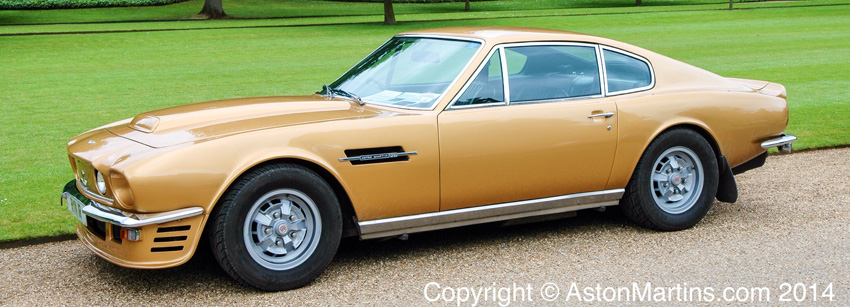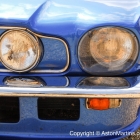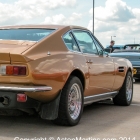A higher ‘Stage 1’ state of tune, otherwise occasionally known as the V8 ‘S’ engine appeared in the Weber Carburettor AMV8 saloon during 1977. An even higher output ‘Stage 2’ engine when installed into the V8 produced the mighty V8 Vantage. The 170 mph projectile shot to fame as the fastest production road car in the world and is now universally accepted as Aston Martin’s and indeed Britain’s first ever ‘Supercar’.
Oddly, the development of the powerful Vantage engine can be traced back to the 1976 wedge shaped Lagonda. The Lagonda due to it’s low nose used a smaller, flatter airbox and modified inlet manifold robbed both power and torque. So as an aid to getting the power back, the Lagonda was given new heads with significantly larger valves. The upshot was that with the newly developed big valves coupled with high lift cams and larger 48 IDF Weber carburettors with revised inlet manifolds, larger diameter trunking and hotter spark plugs, the engine was able to deliver around 375 bhp. Thus the V8 Vantage engine had been created. Initially this ‘hot’ engine was fitted to a V8 mule, indistinguishable from a regular AM V8 and tried out right under the noses of AMOC members race meetings throughout 1976.
The production ready V8 Vantage together with it’s signature aerodynamic enhancements was announced in February 1977 with a modified 1976 AM V8 saloon, V8/11470/RCAC, painted Tankard Grey and carrying the factory AMV8 numberplate. Externally the car featured the trademark Vantage front air dam and three piece blanking plate to the grille and twin Cibie driving lights. The aperture in the bonnet was plugged with a shaped piece of aluminium and the headlights apertures were covered with clear Perspex. On the boot lid was mounted an additional bolted-on aluminium spoiler. The aerodynamic additions to the V8 Vantage were actually developed in the wind tunnel alongside the 1977 Robin Hamilton Le Mans car, RHAM/1 so the similarity between two cars is not a coincidence. The suspension was stiffened, ride height lowered and larger 255/60 Pirelli tyres fitted to standard GKN wheels with spacers to widen the track.
Initially the V8 Vantage was to be offered as an after market upgrade, not unlike the 6.3 Virage or V600 Vantage and a second car in period Lonsdale Yellow was converted to ‘V8 Vantage’ spec before the V8 Vantage became a proper regular production model. Both of these cars have survived, V8/11470/RCAC now carrying UMJ71R repainted with Tourmaline Blue coachwork and V8/11563/RCA carrying RYK1R, still in period Lonsdale Yellow can be seen occasionally at UK events. The Lonsdale Yellow car also had distinctive slightly smaller 5 inch driving lights and one piece blanking plate only subsequently used on four other production cars.
More information on the development of the V8 Vantage is covered in Kean Rogers website, V8Vantage.com which is our principle source of information on the V8 Vantage.





























